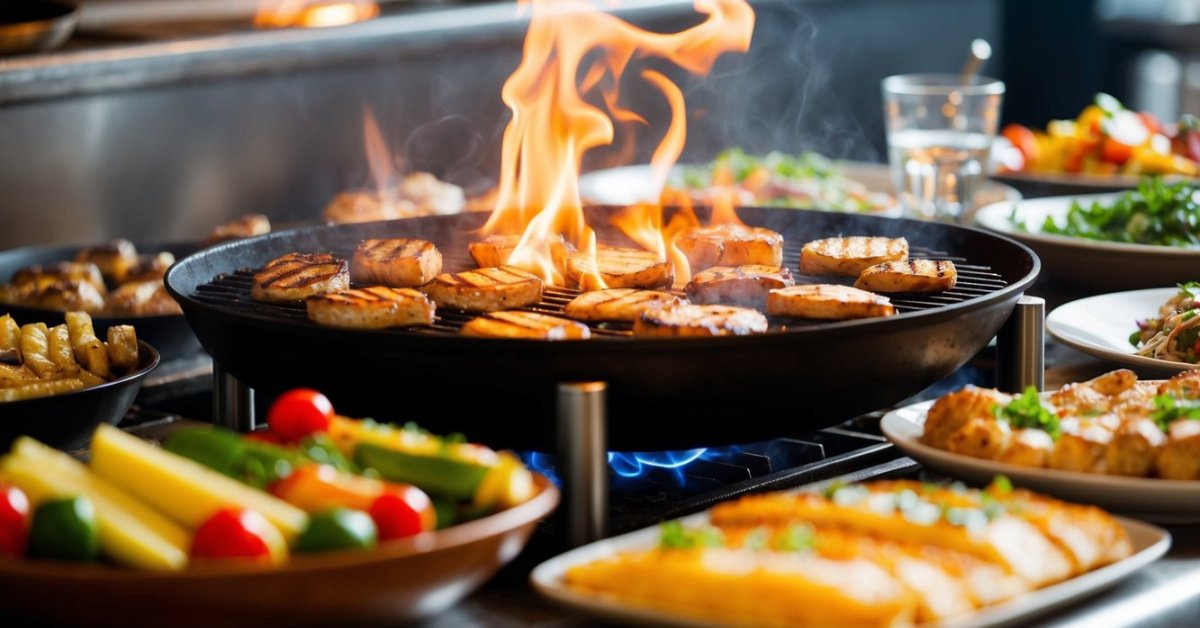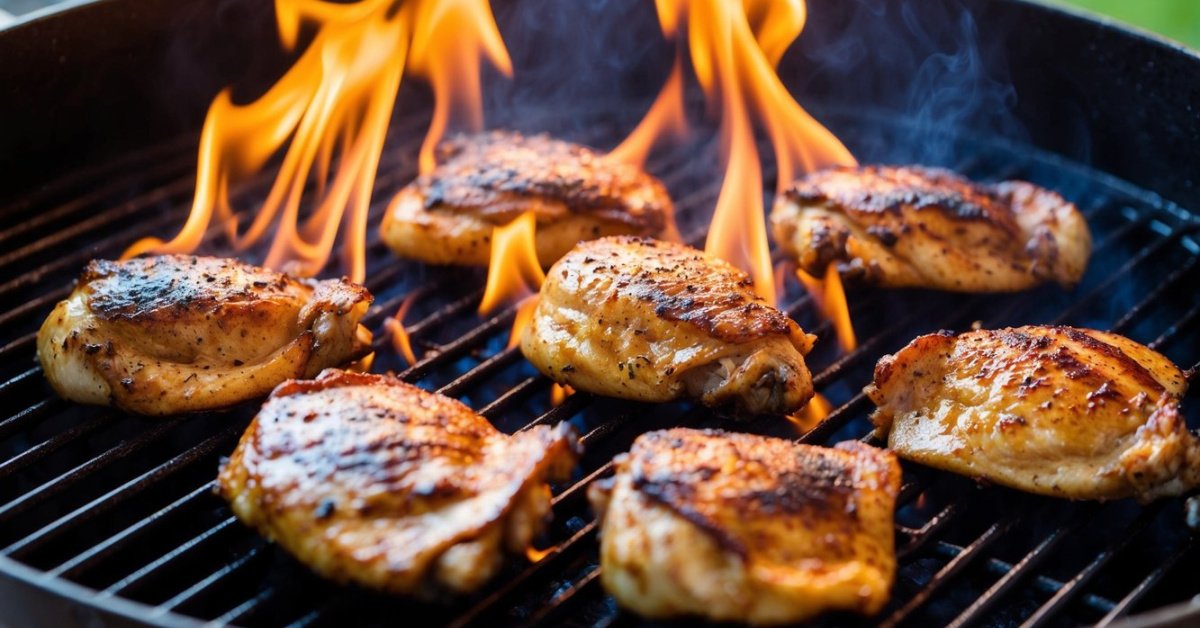I’ve always loved the convenience of a gas grill, but I’ve missed that rich smoky flavor only a smoker can provide. The good news is you don’t have to invest in a separate appliance to enjoy delicious smoked dishes. With a few simple tweaks, you can convert your trusty gas grill into a versatile smoker.

Imagine whipping up tender ribs or perfectly smoked veggies right in your backyard. It’s easier than you might think, and I’ll walk you through each step. Whether you’re a grilling novice or a seasoned pro, this conversion will open up new culinary possibilities and elevate your BBQ game.
Reasons To Convert Your Gas Grill
- Cost Savings: I eliminate the need for a separate smoker, saving around $200 annually.
- Space Efficiency: I save backyard space, ideal for smaller outdoor areas.
- Enhanced Flavor: I add a rich, smoky taste to meats, vegetables.
- Increased Versatility: I enable grilling, smoking, roasting with one appliance.
- Convenience: I streamline cooking processes, reducing equipment clutter.
Essential Equipment And Tools
Converting a gas grill into a smoker requires specific equipment to ensure optimal performance and flavor. Having the right tools makes the process straightforward and enhances your smoking experience.
Choosing The Right Smoker Box
Selecting an appropriate smoker box is crucial for producing consistent smoke. Opt for stainless steel models due to their durability and heat resistance. Ensure the box is compatible with your grill’s burner setup, allowing for easy placement and adequate airflow. Consider sizes that can hold 1-2 cups of wood chips, providing enough smoke without overwhelming the grill.
Selecting Wood Chips
Choosing the right wood chips impacts the flavor of your smoked dishes. Different wood types offer distinct tastes:
- Hickory: Strong, hearty flavor ideal for ribs and pork.
- Apple: Sweet, mild taste perfect for poultry and fish.
- Mesquite: Bold, intense flavor best for beef and game meats.
- Cherry: Fruity, subtle flavor suitable for a variety of meats.
Purchase wood chips from reputable suppliers to ensure quality and consistency. Soaking chips in water for 30 minutes before use can help regulate smoke production, preventing them from burning too quickly.
Step-By-Step Conversion Process
Converting your gas grill into a smoker enhances your BBQ repertoire. Follow these steps to achieve that perfect smoky flavor.
Preparing The Grill
- Clean the Grates: Remove all food residue and grease using a grill brush. A clean surface ensures better heat distribution.
- Adjust the Burners: Set the burners to medium-low heat (250°F to 275°F). This temperature range is ideal for smoking.
- Remove Direct Heat Zones: Disable one or more burners to create an indirect cooking area. This setup prevents direct flame contact with the food.
- Check for Proper Ventilation: Ensure vents are open to allow adequate airflow, which is crucial for maintaining consistent temperatures.
Installing The Smoker Box
- Choose the Right Smoker Box: Select a stainless steel smoker box compatible with your grill. Stainless steel offers durability and resists rust.
- Prepare the Wood Chips: Soak 1-2 cups of wood chips in water for at least 30 minutes. Soaking regulates smoke production and prevents chips from burning too quickly.
- Fill the Smoker Box: Drain the wood chips and place them into the smoker box. Avoid overfilling to ensure proper airflow.
- Position the Smoker Box: Place the smoker box directly over the lit burners. This placement allows the chips to smolder and produce smoke.
- Monitor Smoke Production: Keep the grill lid closed as much as possible. This maintains a steady smoke level and consistent temperature.
By following these steps, you can efficiently convert your gas grill into a versatile smoker, ready to create delicious, smoky dishes.
Tips For Successful Smoking
Achieving flavorful smoked dishes involves precise control and attention. Follow these tips for the best results.
Controlling Temperature
- Consistent Heat: Keep the grill temperature between 225°F and 275°F using a reliable grill thermometer.
- Burner Adjustment: Modify burner settings to maintain steady heat levels throughout the smoking process.
- Vent Management: Open or close vents to regulate airflow, ensuring stable temperatures.
- Lid Minimization: Limit lid openings to prevent unwanted temperature drops and maintain consistent heat.
Maintaining Smoke Flavor
- Quality Wood Chips: Select wood varieties such as hickory, apple, mesquite, and cherry for distinct flavors.
- Soaking Wood Chips: Soak chips for at least 30 minutes before use to control smoke intensity and duration.
- Smoker Box Refills: Replenish wood chips every hour to sustain continuous smoke production.
- Proper Placement: Position the smoker box directly over the lit burners to ensure even smoke distribution.
- Regular Cleaning: Clean smoker components regularly to remove residue that can alter the smoke flavor.
Common Mistakes To Avoid
- Neglecting Grill Cleanup
I skip cleaning the grill thoroughly before conversion, which leads to unwanted flavors and smoke residue. Ensuring a spotless grill surface prevents contamination and enhances the smoking experience.
- Using Low-Quality Smoker Boxes
I opt for inexpensive smoker boxes that rust easily, compromising durability and smoke consistency. Investing in stainless steel smoker boxes maintains longevity and reliable performance.
- Selecting the Wrong Wood Chips
I choose wood chips without considering the type of meat I’m smoking, resulting in mismatched flavors. Picking appropriate wood varieties, like hickory for ribs or apple for poultry, ensures complementary taste profiles.
- Improper Temperature Control
I fail to maintain a steady temperature between 225°F and 275°F, causing uneven cooking and texture issues. Consistently regulating the heat within this range guarantees optimal smoke penetration and tenderness.
- Overopening the Grill Lid
I open the lid frequently, letting heat and smoke escape, which disrupts the cooking process. Minimizing lid openings maintains the necessary environment for effective smoking.
- Not Soaking Wood Chips
I forget to soak wood chips before use, leading to rapid burning and insufficient smoke. Soaking chips for at least 30 minutes slows combustion, providing a steady smoke output.
- Poor Airflow Management
I ignore vent adjustments, causing inadequate airflow and temperature fluctuations. Properly managing vents ensures consistent heat and efficient smoke circulation.
- Ignoring Regular Maintenance
I overlook cleaning the smoker components regularly, resulting in buildup and diminished flavor quality. Maintaining clean smoker parts preserves the integrity of the smoke and overall grilling performance.
- Incorrect Smoker Box Placement
I place the smoker box in the wrong position, obstructing heat distribution and smoke flow. Positioning the smoker box over lit burners optimizes smoke delivery and uniform heat distribution.
- Using Incompatible Grill Accessories
I use accessories that don’t fit my grill model, leading to instability and safety hazards. Selecting compatible tools and accessories ensures a secure and effective smoking setup.

Conclusion
« Best Charcoal Grills for Smoking: Top Picks to Elevate Your BBQ Game
What Is Plank Cooking and How to Start: A Comprehensive Beginner’s Guide »
Turning my gas grill into a smoker has completely changed my BBQ experience. I can now create delicious smoked ribs and veggies without any extra gear. It saved me space and money while adding that rich smoky flavor I crave. If you love grilling and want to try smoking this conversion is a great move. You’ll find it versatile and easy making your outdoor cooking even more enjoyable.













